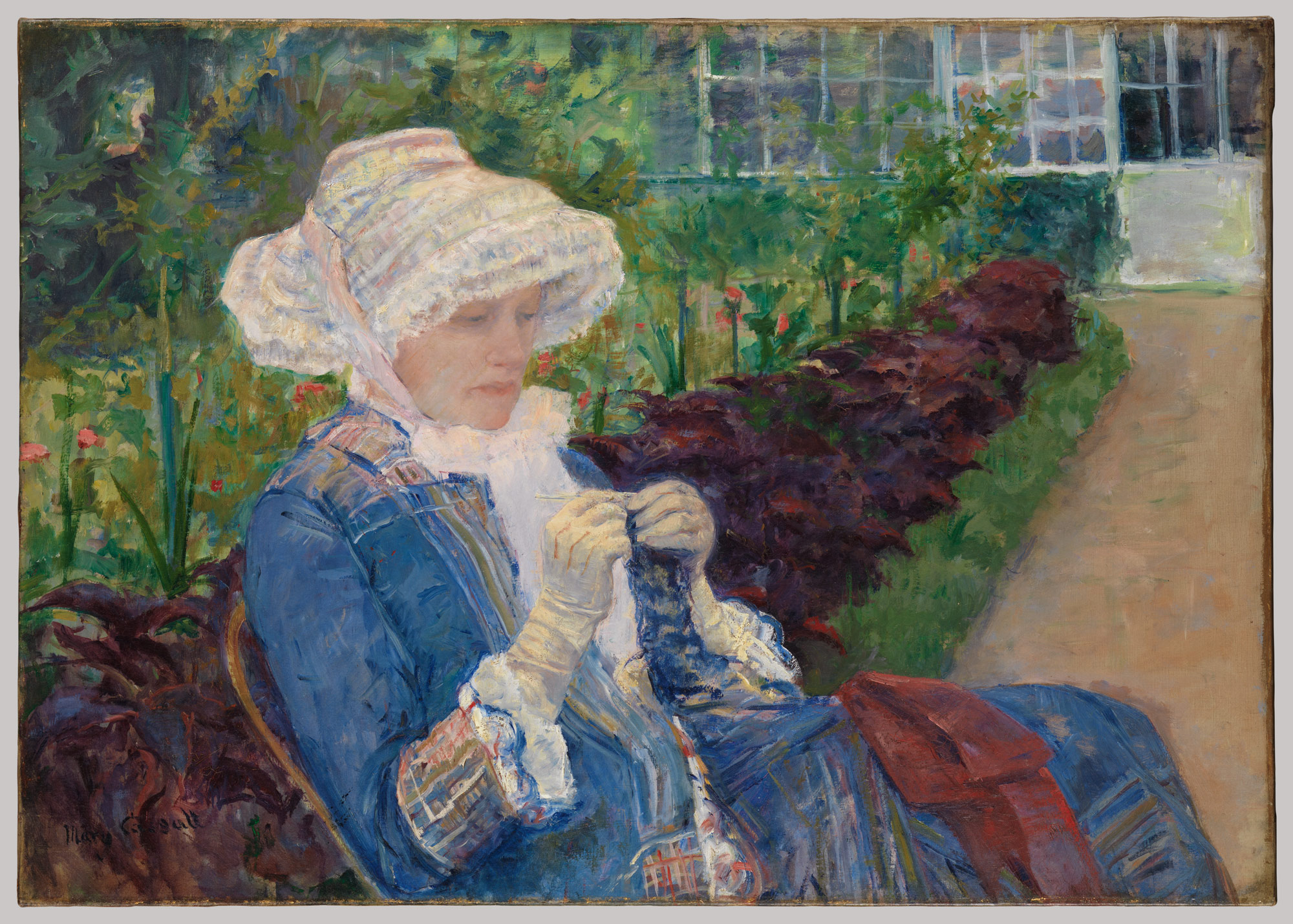
Lydia Crocheting in the Garden at Marly, by Mary Cassatt
Over Christmas, on one of my multiple trips to Barnes & Noble to buy presents (no, not just for me), I happened upon a table overflowing with day calendars. You know the kind I’m talking about: those desk calendars you tear a page away every day, and are entertained by a new joke, inspired by a famous quote, or learn some random fact about history, or cars, or football, or The Walking Dead (for real, I bought this for one of my sons).
Anyway…I bought one for everyone in my family and several for me (I couldn’t decide between wine, Hamilton, and The Metropolitan Museum of Art).
I keep the Met Museum calendar on my desk. Every morning when I sit down before beginning work, I flip to a new page on the calendar. Often the picture is a famous painting, sometimes it’s an artifact. Always it is something to give me pause; consider the brilliance of artists and their artistry.
One of my favorites (so far) is a painting by Mary Cassatt, Lydia Crocheting in the Garden at Marley. I’ve always loved Mary Cassatt’s work. I am naturally drawn to her vivid use of color and impressionistic style. But what I love most about her work (as I do many Impressionist Era painters), is her ability to capture and make beautiful the ordinary stuff of life.
It is an ordinary thing. Crocheting. I have a mom acquaintance who, at any given sporting event, has her knitting with her (when she doesn’t have her giant camera out, working on snapping photos for the paper). At a writing conference two weeks ago, I noticed a fellow writer who sat down at every session (at least the ones I saw her at) and pulled out—not her pen and paper—but her knitting.
Ordinary. And yet, Mary Cassatt has captured this ordinary task on a 25 x 36 (-ish) oil on canvas; vibrant, peaceful, balanced. And now it hangs in a world-renowned museum where it gets approximately 7 million views a year.
How is that?
Here is something I wondered as I observed Lydia Crocheting in the Garden at Marly:
Do we have many examples of art capturing the mundane today? Not the dramatized, glamorized mundane. Just the mundane. Hmm…
I love art and art museums, but I’m no art expert. I’m fortunate to have visited several well-known art museums: the major ones in Paris (Louvre, d’Orsay, l’Orangerie, Pompidou), NYC, Philadelphia, Chicago, Smithsonian in D.C….(gosh…more than I thought). My favorite era has always been Impressionism. I do love the soaring works of ancient and medieval artists who painted, sculpted, and erected works pointing us, mere mortals, heavenward. I need these works in my life. And I can appreciate the works of some modern artists as well, especially those that reveal the beauty of this life in new and creative ways—especially using unique mediums (some I’ve seen recently at Roanoke’s Taubman Museum: crayons, balloons, paper, hair, stuffed animals…).
But it is in the impressionist’s eye where I live. In the ordinary. In the everyday. I am a child of haystacks (or straw bales), cut flowers in an old vase, lily pads on the pond. I am the woman of everyday chores, with a table to set for dinner, bread to cut, holes to mend. When I stand observing Impressionist Era paintings, hanging in the most venerable art halls of the world, I see myself. I see the life I live. And the lives of those around me, too.
To me, there is a spark of the eternal in the artist’s capturing the fullness of such ordinary living. By fullness, I mean abundance, exceedingly enough; an ever-flowing fountain of everyday living. It is a fullness connecting me with generations before, and generations to come.
And then, there is this: In the simple act of crocheting in the park (or knitting on the bleachers, or at a writing conference), is the greater truth and beauty of stewardship. Such an old fashioned word: stewardship; and one of my favorites (much to my children’s dismay). It is the faithful work of doing well with what we’ve been given. And oftentimes—most all the time—doing well is found in the very ordinary tasks of life.
Like Lydia, crocheting in the garden at Marly.
(P.S. I realize I didn’t answer my earlier question about finding modern art that recognizes the mundane today…my inclination is it’s not as easily found–especially in the major outlets–largest museums, entertainment world, etc. What do you think?)

Beautiful words: “But it is in the impressionist’s eye where I live. In the ordinary. In the everyday. I am a child of haystacks (or straw bales), cut flowers in an old vase, lily pads on the pond. I am the woman of everyday chores, with a table to set for dinner, bread to cut, holes to mend. When I stand observing Impressionist Era paintings, hanging in the most venerable art halls of the world, I see myself. I see the life I live. And the lives of those around me, too.”
X0!